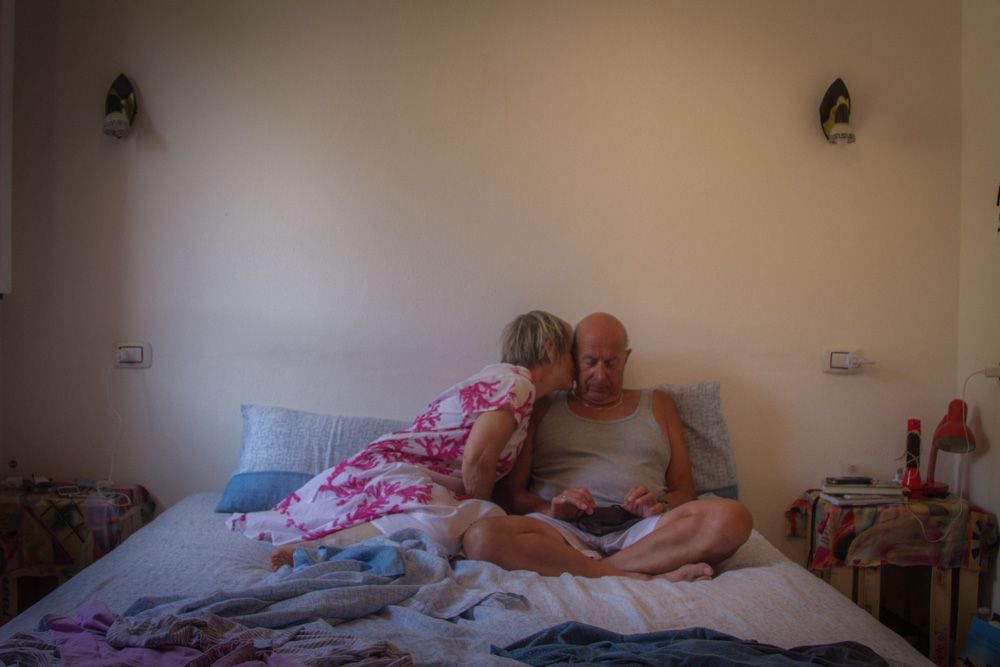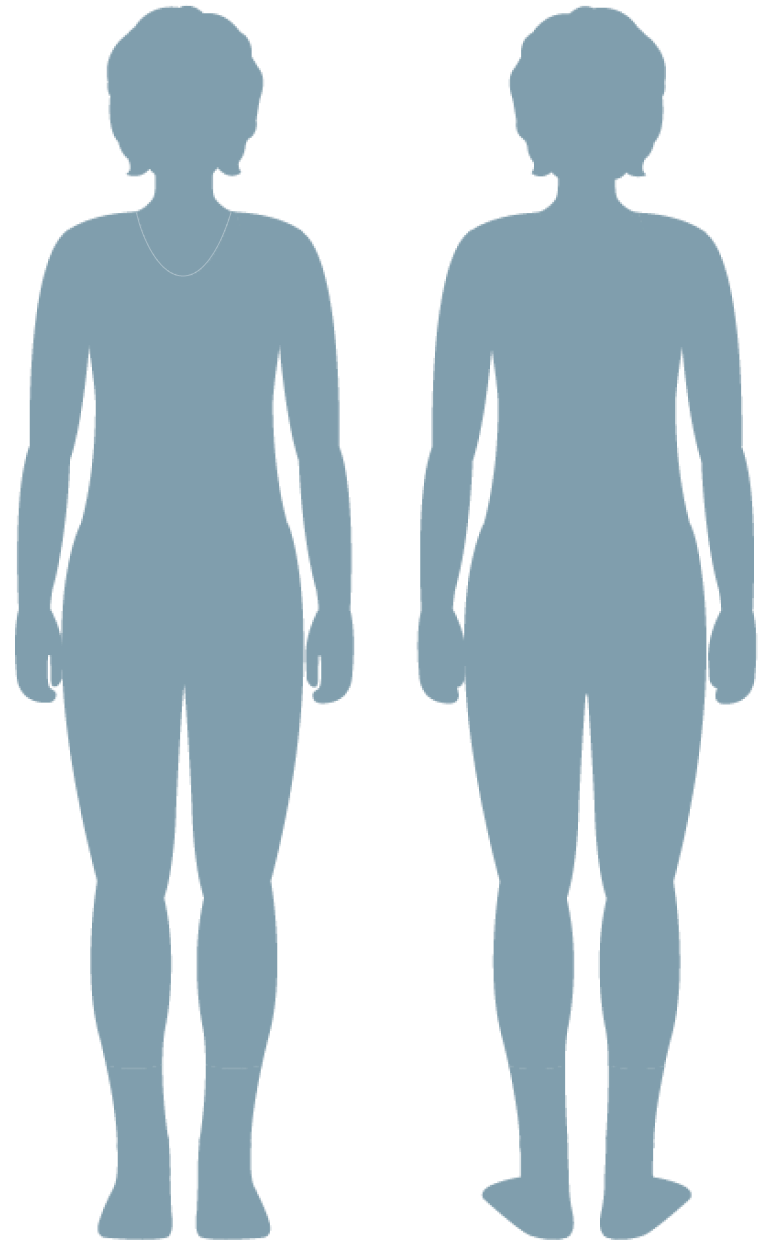Intimacy exercises
Using sensate focus exercises to reclaim sex and intimacy after prostate cancer

After prostate cancer treatment, sensate focus exercises can help you and your partner reconnect sexually. So, what are sensate focus exercises?
Simply put, these exercises are about touching and being touched.
Sensate focus is about creating more awareness of your bodies and pleasurable sensations. And really, taking your time and not rushing into sex. These exercises include getting physically close, and both verbal and non-verbal communication between partners. Sensate focus exercises can also be done when couples want to be physically close without pressure to have sex.
How can sensate focus exercises for couples help you overcome intimacy issues after prostate cancer treatment?
Prostate cancer affects intimacy, period. How and for how long? That varies from one person to the next. But there’s good news: you will gradually get in touch with your own body again, as well as your partner’s. You might discover something new about yourself or your partner, gaining skills in how to enjoy physical closeness.
Increase awareness of your own and your partner’s body.
Improve comfort with physical intimacy.
Discover new types of touch, likes and dislikes.
Decrease fear of failure, anxiety about sexual performance or reaching orgasm.
Improve sexual communication.
Sensate focus exercises can help you:
Sensate focus exercises help ease a couple into the process of becoming intimate in new ways and develop communication skills.
If you don’t have a partner right now, you may hope to have one in the future. It can be good to try the process individually and understand how your body reacts to sensual touching now that you’ve had prostate cancer treatment. You may find that your sensitivities are the same. Or, you might discover something new about yourself. If physical closeness with a partner is a future goal, you may gain skills in how to enjoy it in a new way.
How to do sensate focus exercises
Now that you know what sensate focus exercises are, let’s get into how they’re actually done. You may want to talk to a sexual health therapist or expert about this, and get some guidance on how you might approach it.
First, you’ll want to take some time to prepare yourself. Then, you can move into the different phases.
Prepare for a more sensual experience
Create the right environment
Choose somewhere private that makes you both feel relaxed. To help set the mood, you can:
Dim the lights and play soft music you both enjoy.
Use candles and incense.
Turn off your phones.
Use lots of pillows and a comforter.
Use baby oils, scented oils, lotions, or powder.
Keep the room warm enough that you’re both comfortable.
Make time
Set aside about an hour for your "dates". Each one can be broken up with different exercises. It is important to choose a time when you will not be interrupted.
Find your comfort zone
Decide if you and your partner will be wearing clothes. You can consider wearing underwear or loose-fitting clothing if it makes you feel more comfortable.
Some people are immediately comfortable being naked together. Others prefer to start being partially clothed. It is fine to start with small, uncovered areas to see how it works.
Talk about your roles
Each of you will have a role to begin your sensate exercises, then switch. One will start out as the partner who will be touched. The other will be the one touching. Before going into your first session, decide who will be participating in each role first.
If you are the person doing the touching, focus on:
Your own experience of touching (the temperature of your partner’s body, the amount of pressure you’re using, the texture of your partner’s skin or hair), and
Managing distractions (automatic thoughts, feelings, etc). Always keep bringing attention back by focusing on what your touch feels like to you.
If you are the person being touched, focus on:
The experience of being touched (temperature, pressure, texture), and
Moving or redirecting the toucher’s hand if sensation is uncomfortable in any way.
When the toucher is ready to swap roles, they say "switch".
A small sensate focus exercise to get started
Here’s a small exercise that you can try before doing the full sensate focus experience, to get the hang of it.
Begin by sitting in a comfortable position, facing each other.
One of you start by massaging the other person’s hands for 5 minutes.
Take a few minutes to discuss what you enjoyed about the experience.
What did it feel like to touch and be touched?
Next, switch roles and repeat.
Phase 1: non-genital touching
Start by choosing the area of the body where you want to begin. Avoid genitals and sexually sensitive areas like nipples (or other sensitive areas on your body).
Once you become comfortable with this area, go bigger. Slowly touch larger areas of the body until the whole body has been touched. This can take several weeks. Don’t rush. Stay focused, non-pressured, and friendly.
Try to be as quiet as possible so you do not take away from the awareness of physical sensations. Do not think of it as therapeutic massage. It is intended just to increase one’s awareness and to create pleasurable sensation, not to fix a problem.
Take time to explore each other’s body. In this first phase, focus on touching parts of the body normally visible. This includes the hands, arms, feet, and face.
Begin with facial caressing. Gently caress the chin, cheeks, forehead, and temples (sides of the forehead). Then touch the ear lobes, lips, and the nose. Gently massage the temples to relax your partner.
Ask your partner to lie on their stomach. Massage their back, neck, arms, butt and legs.
Ask your partner to lie on their back. Gently caress their chest, stomach, shoulders and thighs. Avoid touching the breasts and groin area.
You may also want to use message oils or lotions while massaging your partner.
Once you have finished massaging your partner, your partner will now massage you. Repeat the steps above.
Pay attention to what your partner likes. If your partner gets pleasure from being touched in a certain way, do it again.
Tell your partner what you like.
- Make noises if you like what they are doing.
- Move their hand to where you want to be touched.
- Talk about what you like.
Encourage each other and use positive language (e.g. ‘it feels better when you…..’ rather than ‘don’t…’).
If there is something new you’d like to try, suggest it to your partner.
Avoid touching the genitals.
Try different types of massage.
Keep in mind:
Body mapping exercise
To make it easier to define what areas you want to be touched, you can use the body maps below.
Print out the maps that best represent you and your partner. Draw on your map to show the areas of your body you want your partner to touch.
As you gradually increase the areas over time, reprint and update your body maps.


Phase 2: genital touching
During this phase, you can begin to move into generating pleasure.
Talk about it with each other first so that you know where to start. It could be stroking feet, the stomach, again, begin with non-sexual areas.
Talk at the end of each exercise to tell each other what felt good. Decide, by talking, where you’ll go next.
Continue to use sensate touch and pleasure-inducing touch to keep your whole body a part of the sensual and eventually sexual experience.
After you have identified pleasurable areas all around each other’s body, move towards touching sexually sensitive areas other than genitals.
Gradually move towards pleasuring genitals.
Begin by touching areas that give lots of pleasure. This includes touching nipples.
Gently massage the areas around the genitals. This includes touching the testicles.
Touch the genitals, including touching the penis, shaft and glans.
In this phase, you may also want to include kissing, licking and sucking.
Try teasing your partner. Gently arouse your partner’s genitals, then increase the speed of stimulation. Take a break for a few minutes. Continue playing with your partner’s genitals again. Pay attention to how your partner responds to having their genitals stimulated at different speeds.
Continue to pay attention to how each of you responds to different types of stimulation.
This can take 2 or 3 weeks of twice a week activity.
Take your time. Spend as much time as you need in this phase before you move onto phase 3.
Remember to pay attention to the parts of the body that you explored in phase 1.
It may be useful to use lubricants for the genital area.
Avoid penetration during this phase.
Orgasm may happen during this phase and it's perfectly fine.
Keep in mind:
Phase 3: including penetration
While continuing to pay attention to all the previously explored parts of the body, you can now include penetration. Penetration can be done using fingers, toys, or the penis if you're able to have an erection.
Continue to pay attention to the parts of the body that you explored in the previous sessions.
In this phase, include penetration. Penetration can be done using fingers, toys, or the penis. Penetration may only include fingers and toys as erectile function slowly returns. Penile penetration may not happen until you are confident in erectile function.
Enjoy the feeling of penetration. Begin gentle penetration with little or no thrusting. As you feel comfortable in phase 3, you can slowly increase the amount of thrusting. Tell your partner what feels good.
Try different sexual positions. It may be helpful to read books that talk about different sexual positions.
Orgasm and intercourse may happen in this phase. The goal of this phase is to experience the pleasure and intimacy of touch with sexual activity.
Keep in mind:
Sensate focus can take time and practice. If you find that you need some support, try working with a sexual health counselor or expert.
Sensate Focus Exercises were developed by sexual health researchers in the 1960s, William Masters and Virginia Johnson.